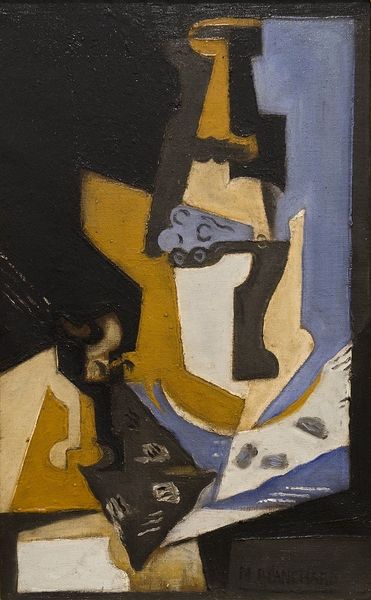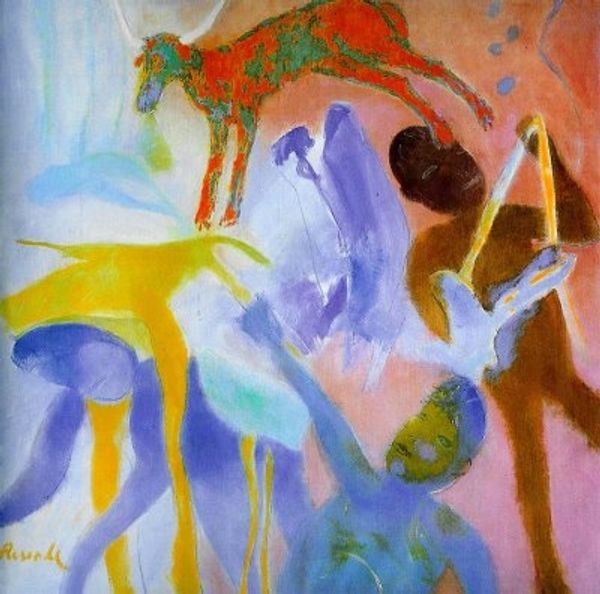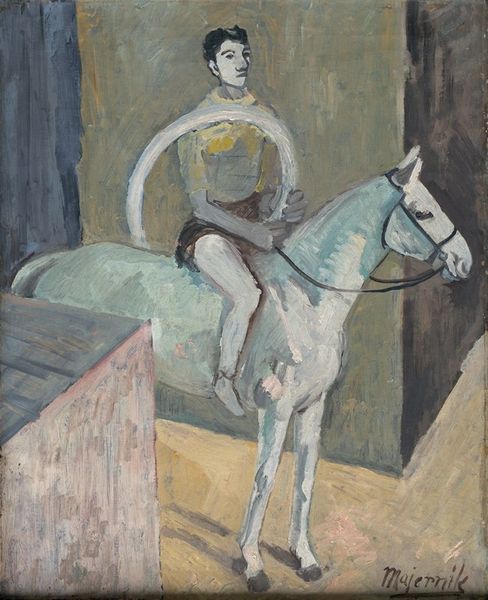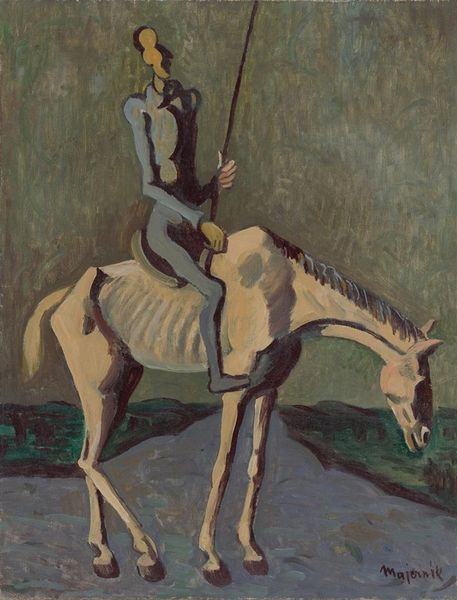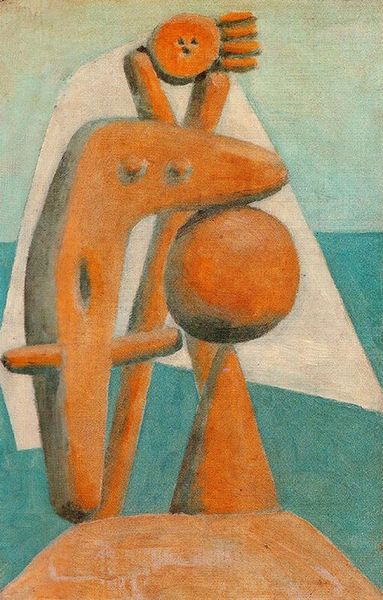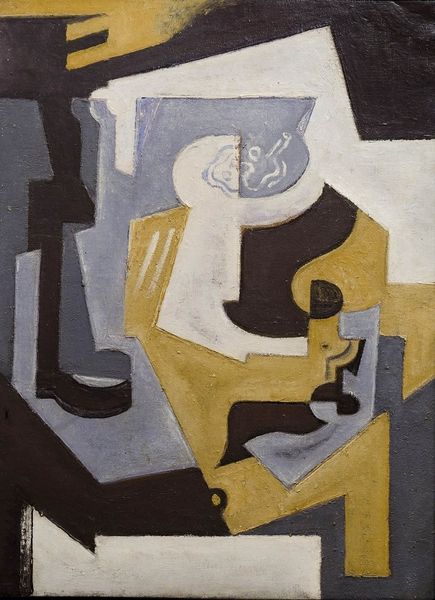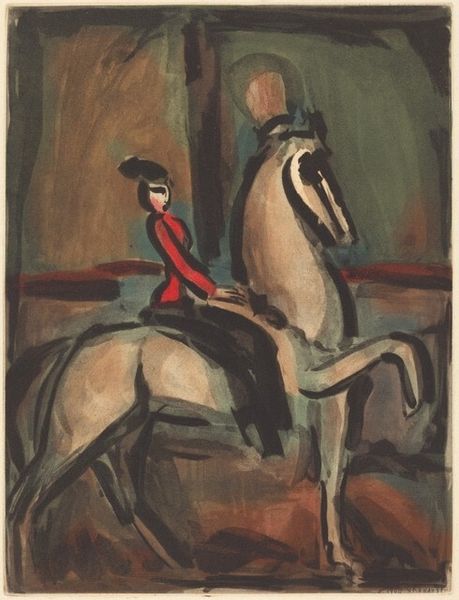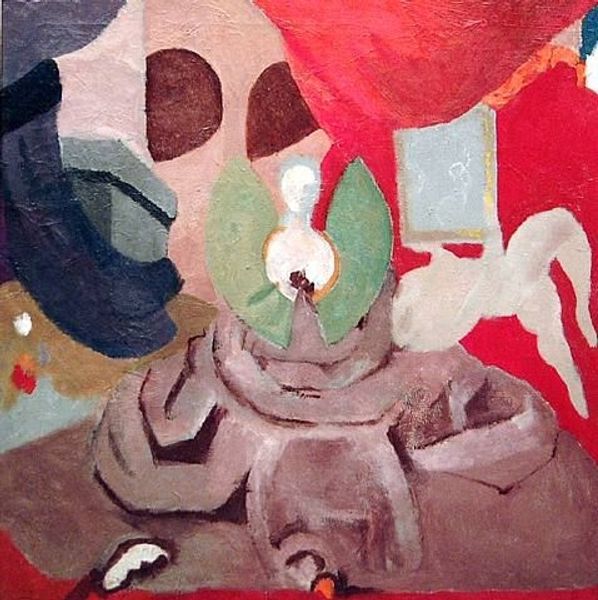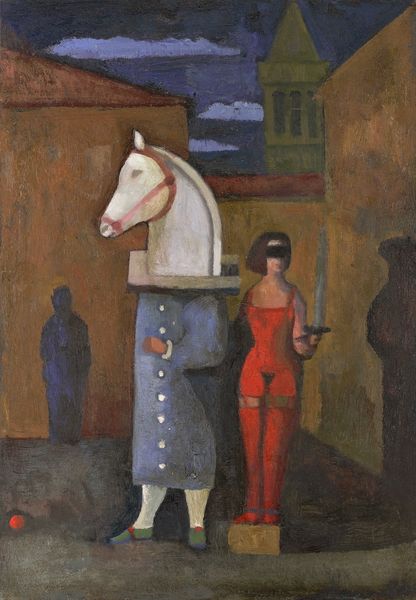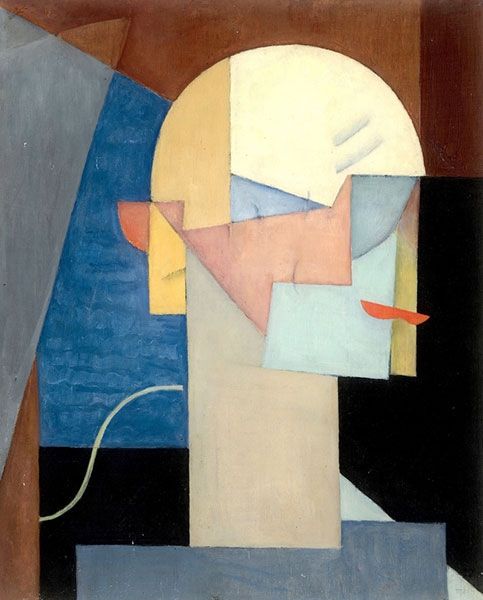
painting, oil-paint
gouache
acrylic
bloomsbury-group
painting
oil-paint
oil painting
geometric
modernism
Copyright: Public domain
Curator: Looking at Roger Fry's "Still Life with T'ang Horse" from 1921, what are your initial thoughts? Editor: Well, the subdued palette strikes me first. It feels introspective, almost melancholy. There's a sense of quietude. What about you? Curator: I'm drawn to the materiality of it all. The way Fry builds up the paint, particularly in the horse. You can almost feel the texture of the clay it's imitating, connecting with the act of sculptural creation, too. Editor: I see the quietude as a deliberate artistic choice, especially during the interwar period. Was Fry perhaps reflecting on cultural fragility, positioning a symbolic emblem of a powerful dynasty – that horse – next to something as ephemeral as a flower? Curator: That’s interesting. It makes me think about Fry's commitment to the Omega Workshops, which aimed to elevate craft to the level of fine art. Here, he merges historical artifact with everyday objects – collapsing hierarchies of value, no? Editor: Precisely. Fry uses the colonial gaze, reinterpreting the Tang horse figurine from his Eurocentric view point. It allows a cultural exchange within a confined frame and limited visual space, hinting at broader narratives around imperialism, identity, and power dynamics. Curator: And thinking about his Bloomsbury Group connections, this might be a gentle subversion of traditional artistic subjects, almost slyly democratic in its arrangement. Editor: Yes, but that democracy still carries its own baggage. We cannot dismiss the fact that, in Fry's construction, "Eastern" culture is, in a way, frozen, objectified, and filtered through his Western, modernist lens. Even in his attempt to make high art accessible, the work underscores how complex it is to decolonize vision itself. Curator: Absolutely. I appreciate how analyzing his approach challenges any notion of purely objective artistic vision, even in a simple still life. Editor: Me too. Considering that history adds so many layers to what initially felt like just a simple arrangement. Curator: Indeed; there's so much to see. Editor: Exactly, isn't it wonderful?
Comments
No comments
Be the first to comment and join the conversation on the ultimate creative platform.

